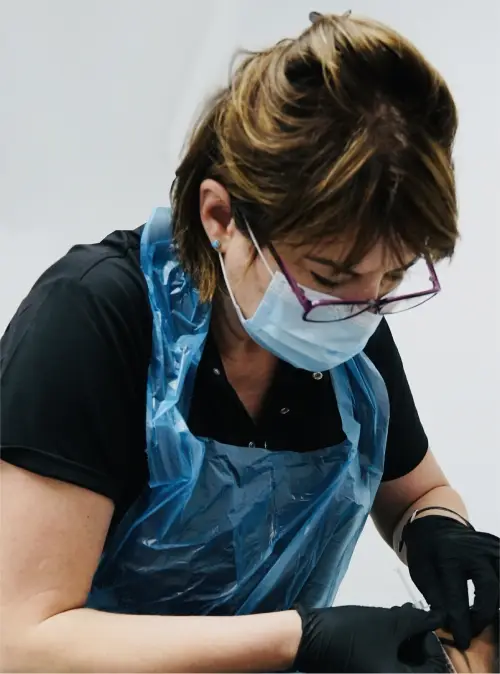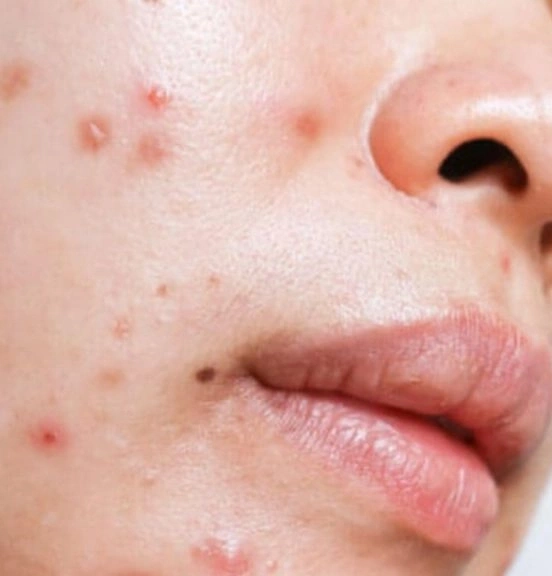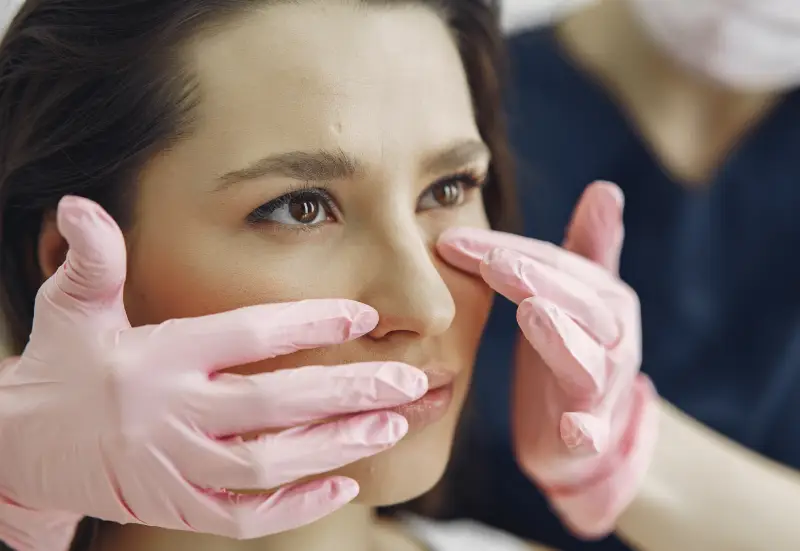SKIN HEALTH & BEAUTY CLINIC | BOURNEMOUTH
Sebaceous Cyst Removal
Sebaceous Cyst Removal By Our Professional Medical Team

We also remove benign:

What are Sebaceous Cysts?
Sebaceous cysts, also known as epidermoid cysts, are noncancerous, closed sacs or lumps beneath the skin’s surface. These cysts typically form when the skin’s sebaceous glands become blocked or damaged, leading to the accumulation of oil (sebum), dead skin cells, and other substances within a sac. Sebaceous cysts are usually smooth to the touch and can vary in size from small pea-sized lumps to larger growths. They are most commonly found on the face, neck, scalp, and back, but they can occur anywhere on the body. While sebaceous cysts are generally harmless, they may become inflamed, infected, or cosmetically bothersome, necessitating treatment such as drainage or surgical removal by our highly qualified clinicians at Skin Health & Beauty in Bournemouth.
What Causes Sebaceous Cysts?
Sebaceous cysts develop when the sebaceous glands, which are responsible for producing oil (sebum) to lubricate the skin and hair, become blocked or damaged. This blockage can occur due to various factors, including:
Excessive Sebum Production: Overproduction of sebum can lead to the formation of cysts as the excess oil becomes trapped beneath the skin’s surface.
Hair Follicle Blockage: Blockage of hair follicles, often due to a buildup of keratin (a protein found in hair and skin), can contribute to the development of sebaceous cysts.
Trauma to the Skin: Injuries or trauma to the skin can disrupt the normal function of sebaceous glands, leading to cyst formation as sebum becomes trapped in the damaged area.
Hormonal Changes: Hormonal fluctuations, such as those occurring during puberty, pregnancy, or menopause, can affect sebum production and increase the likelihood of developing cysts.
Genetic Factors: Some individuals may have a genetic predisposition to developing sebaceous cysts, making them more prone to experiencing this condition.


Is Sebaceous Cysts Removal A Safe Procedure?
We, at Skin Health & Beauty Clinic in Bournemouth, remove Sebaceous cyst by electrocautery which is generally considered a safe procedure when performed by our qualified medical aesthetic professional. Electrocautery involves using a small probe that delivers a controlled electric current to the cyst, effectively burning and destroying the tissue. This method is often chosen for its precision and effectiveness in removing cysts while minimizing bleeding and reducing the risk of infection.
FAQ
Frequently Asked
Is electrocautery a suitable method for removing sebaceous cysts?
Yes, electrocautery is often used by healthcare professionals to safely remove sebaceous cysts.
How does electrocautery work for sebaceous cyst removal?
Is electrocautery painful for sebaceous cyst removal?
Discomfort during electrocautery is typically minimal, and local anaesthetic may be applied to ensure comfort during the procedure.
How long does it take to recover from sebaceous cyst removal by electrocautery?
Recovery time varies, but most patients can resume their normal activities shortly after the procedure. Some redness or mild discomfort may occur but usually resolves within a few days.
Are there any risks associated with electrocautery for sebaceous cyst removal?
While rare, risks may include infection, scarring, or damage to surrounding tissue. Your healthcare professional will discuss these potential risks with you before the procedure.
Can I expect scarring after sebaceous cyst removal with electrocautery?
Scarring is minimal with electrocautery, but individual outcomes may vary. Your healthcare provider will take steps to minimize scarring and promote optimal healing.
Are there any risks associated with electrocautery for sebaceous cyst removal?
While rare, risks may include infection, scarring, or damage to surrounding tissue. Your healthcare professional will discuss these potential risks with you before the procedure.
How effective is electrocautery for removing sebaceous cysts?
Electrocautery is highly effective in removing sebaceous cysts, with minimal recurrence rates reported when performed by experienced healthcare professionals.
Are there any special precautions I should take after sebaceous cyst removal by electrocautery?
Our specialised and qualified clinician will provide post-procedure care instructions, which may include keeping the area clean and dry and avoiding strenuous activities until the area has fully healed.
Opening Times
| Day | Hours |
|---|---|
| Monday | 8:30 - 20:00 |
| Tuesday | 8:30 - 20:00 |
| Wednesday | 8:30 - 20:00 |
| Thursday | 8:30 - 20:00 |
| Friday | 8:30 - 20:00 |
| Saturday | 10:00 - 20:00 |
| Sunday | 10:00 - 13:00 |
Clinic Address
878, Christchurch road, Bournemouth BH76DJ
Telephone
07393 770773
Finding us
Our clinic is located on the left hand side of Christchurch Road a few meters away from Kwik Fit towards Iford roundabout, just at the Hannington Road Bus Stop. There is plenty of transport link to Bournemouth, Poole and Chirstchurch all day and free parking outside the clinic for an hour and in the side roads unlimited.

